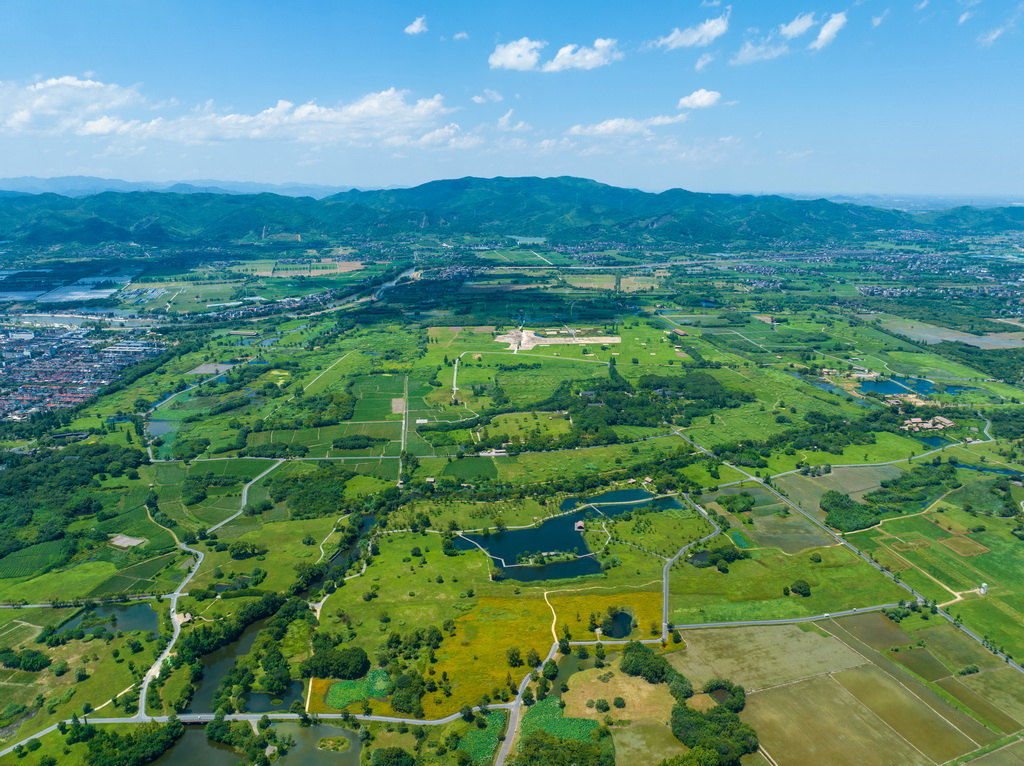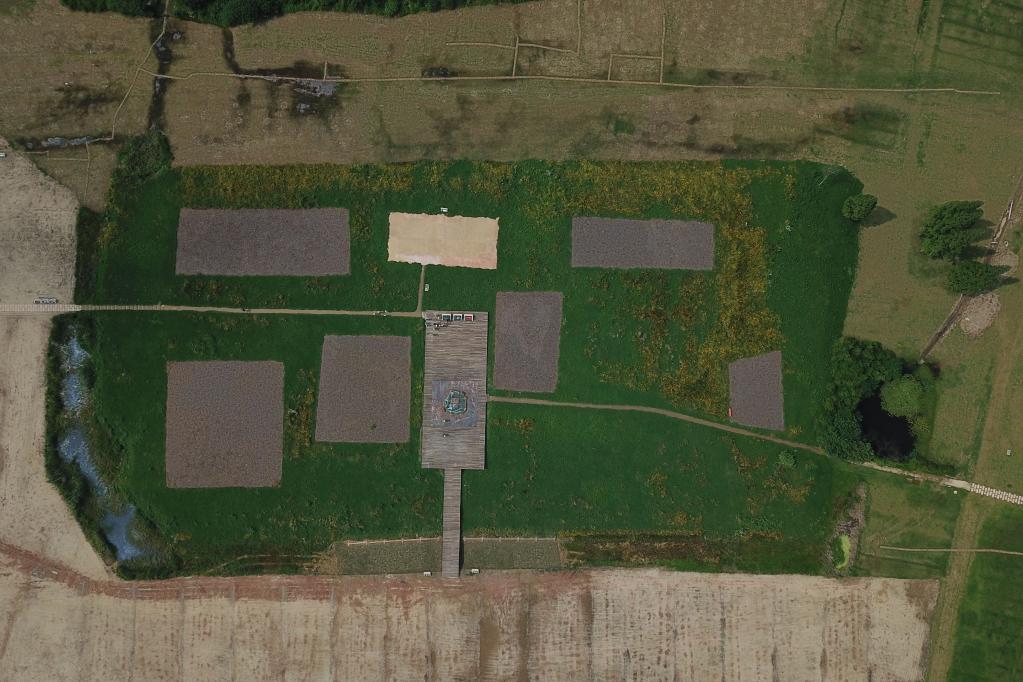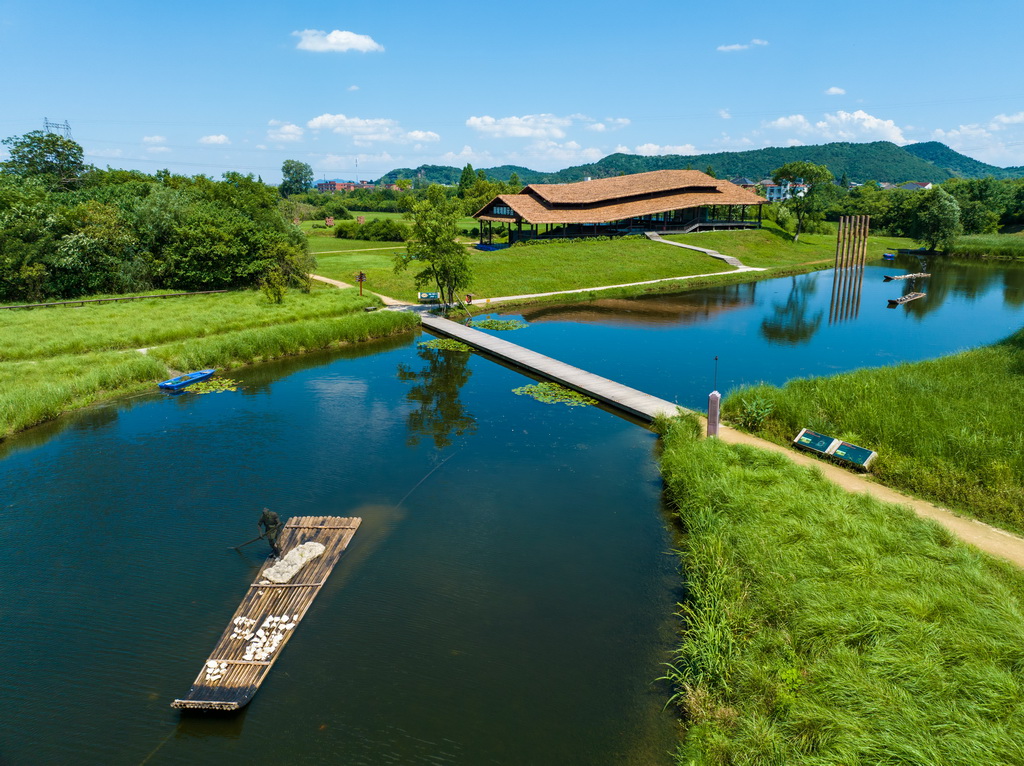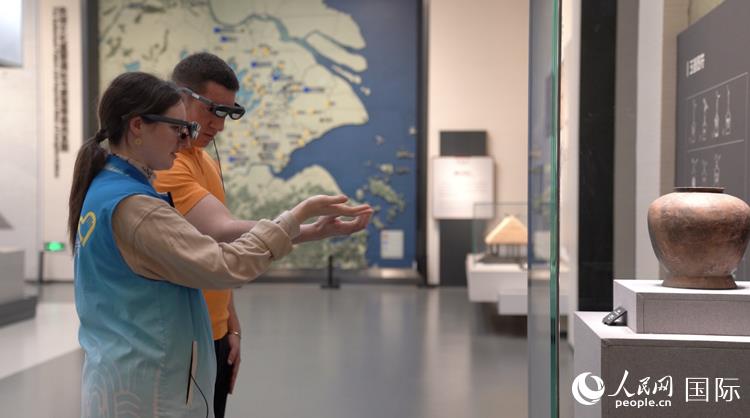Cultural context, Huazhang, Liangzhu: the rebirth of Qingshan Greening Site
Liangzhu, which means "a beautiful continent in water", is located in the plain of Yuhang District, Hangzhou City, Zhejiang Province. In 1936, Mr. Shi Xingeng of Lixihu Museum in Zhejiang Province first discovered and excavated many prehistoric sites in Liangzhu Town. In 1959, Liangzhu culture, named after Liangzhu site, was confirmed, which became an important witness to the 5,000-year history of Chinese civilization.
Liangzhu has always touched the heart of the Supreme Leader General Secretary — — I visited the site twice and made important instructions on the protection and application of Liangzhu site many times.

Panorama of Hangzhou Liangzhu Ancient City Ruins Park (photo of drone) taken on July 4, 2024. Xinhua News Agency reporter Jianghan photo
It is hard to imagine that this important root of Chinese civilization was once in jeopardy.
At the beginning of the new century, due to the excellent quality of andesite produced in the local area, Liangzhu became a "gold mine" for stone mining. A large number of mountains and rocks were blasted, which seriously affected the development and protection of the site.
On July 16th, 2003, the supreme leader of Zhejiang Provincial Party Committee came to Liangzhu site for investigation.
"Liangzhu site is a sacred place to prove the history of China’s 5,000-year civilization, and it is a rare treasure. We must protect it!" In the conference room of Liangzhu Cultural Museum, the supreme leader watched the video of Liangzhu site protection and archaeological excavation, and listened to the report.
When it was learned that it was difficult to shut down six stone mines in Deqing county, Huzhou, which affected the safety of the site, the supreme leader made a decisive decision, "Tomorrow, I will go to Huzhou."
Soon, these quarries were completely shut down.
Under the care and guidance of the supreme leader, the protection of Liangzhu site and archaeological work are getting better and better.
On March 18th, 2005, Liangzhu Museum broke ground. This is an archaeological site museum integrating collection, research, exhibition and publicity of Liangzhu culture, with a construction area of about 10,000 square meters. On September 29th, 2008, it was officially completed and opened to the public.

On June 23, 2019, the palace area of Liangzhu National Archaeological Site Park was photographed by drones. Xinhua News Agency reporter Huang Zongzhi photo
In 2007, an important discovery was made at the archaeological site of Liangzhu Site, and a prehistoric ancient city that had disappeared for more than 4,000 years appeared, which shocked the archaeological community in China. Subsequently, the archaeological excavation and research of the ancient city continued to deepen, and its spatial pattern, functional zoning and the connotation of various remains became increasingly clear.
After working in the central government, the supreme leader has always been concerned about Liangzhu.
On October 31, 2008, the Supreme Leader once again inspected the protection of Liangzhu Site. In Liangzhu Museum, he earnestly entrusted: "Liangzhu Museum should be built into a center for the exhibition and popularization of Liangzhu culture, an academic research center and a patriotic education center", and "the cultural relics collected in the museum should be ‘ Live ’ Get up. "
On June 13, 2016, four archaeologists jointly sent a letter to the Supreme Leader, hoping to promote the Liangzhu site to declare the world cultural heritage as soon as possible. On July 13th, the Supreme Leader made an important instruction: "The work of declaring the world cultural heritage should be arranged as a whole, and the declared projects should be conducive to highlighting the historical and cultural value of Chinese civilization, embodying the spiritual pursuit of the Chinese nation, and showing the world the comprehensive and true ancient China and modern China."
Liangzhu’s application for the World Heritage has thus entered the fast lane.
On July 6, 2019, the 43rd meeting of UNESCO World Heritage Committee held in Azerbaijan brought good news — — Liangzhu Ancient City Site was successfully listed in the World Heritage List.
"It represents the achievements of China’s great prehistoric rice civilization more than 5,000 years ago" and "it is an outstanding representative of urban civilization" — — The UNESCO World Heritage Committee spoke highly of it.

On July 4, 2024, Hangzhou Liangzhu Ancient City Ruins Park South City Wall Ruins Exhibition Point (drone photo). Xinhua News Agency reporter Jianghan photo

Foreign experts from People’s Daily Online experience AR glasses in Liangzhu Museum. People’s Daily reporter Yuan Mengshe
Castle peak is still green, and the site is reborn. Nowadays, Liangzhu site is presented to the world with a brand-new look, showing the long history and humanistic heritage of Chinese civilization.